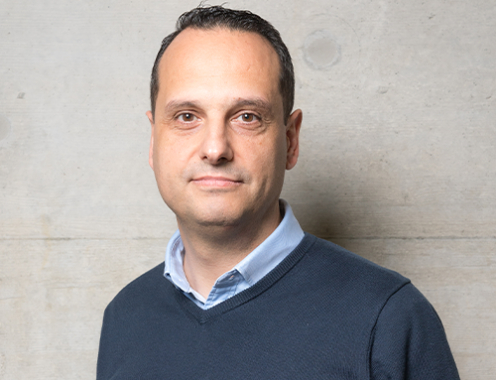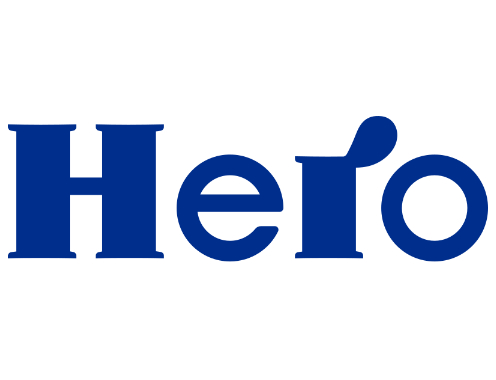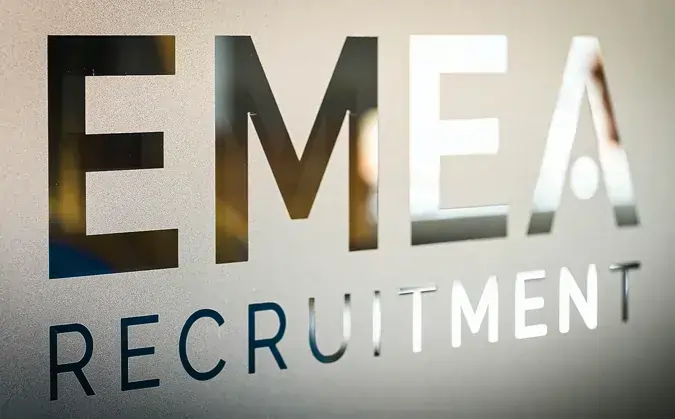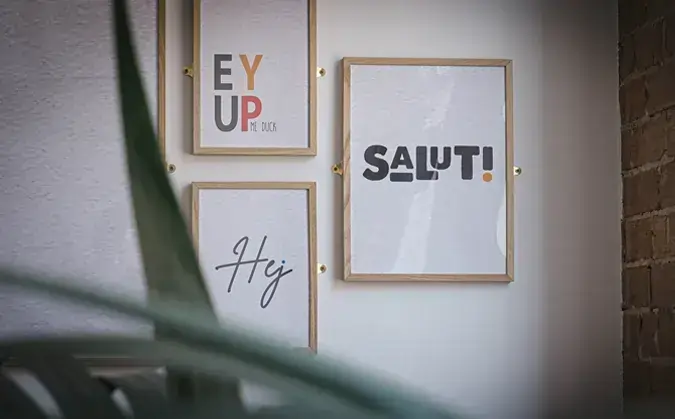Kyriakos Kasapidis - VP Finance – Supply Chain CFO at Hero Group


Kyriakos Kasapidis is the VP Finance – Supply Chain CFO at Hero Group. In this interview, we explore his passion for the field, the latest trends shaping its future, and its critical role in business success.
Kyriakos also reflects on his transition from global giants Unilever and J&J to a smaller FMCG organization, discussing the unique advantages and challenges of this shift. He also shares insights on the impact of ESG reporting and key lessons learned throughout his career.
For more than ten years, your career has focused on Supply Chain Finance. What excites you the most about working in this area?
Over the last 20-plus years, I’ve been lucky to rotate in several positions within Finance. Finance as a function is quite wide, offering the opportunity to learn, explore, and be involved in several diverse business topics. Rotating and learning new things are always quite challenging, but also quite rewarding.
What I like about Supply Chain Finance is it touches on several aspects of the business. You see the direct impact of your decisions, even in the short to medium term. Supply Chain Finance is not only about reducing costs, but also supporting growth, co-shaping portfolio decisions, serving demand, and improving end-to-end processes, as well as driving transformational projects.
For me, the direct correlation between a decision or a project and the impact on the business is very motivating.
Over the last few years, I had the opportunity to lead several transformational projects where someone can clearly see the outcome and the concrete business impact they delivered.
In summary, this connectivity between decision and impact is very motivating and an exciting element of the job.
With the Supply Chain landscape constantly evolving, what new trends or developments are you most enthusiastic about and why?
I would say there are three indicative elements in the new landscape. One is all about integration with the overall business. The silo mentality, between Supply Chain and Commercial or even within Supply Chain functions, is gone. A few years ago, you may have seen it in some businesses. But now, people are really moving away from this and adopting a fully integrated approach.
As mentioned above, Supply Chain has a wide and critical business role to play. Optimizing your cost structure to service a volatile demand is one element. SC is involved and contributes in co-shaping the innovation agenda, drives decision making process in terms of leveraging and exploring existing capabilities, investing in new capabilities or capacity, as well as building a strong third-party manufacturing network. Enhancing end-to-end processes across the entire organization, like S&OP [sales and operations planning], is also a key enabler and success factor, which SC is a key stakeholder.
Another point I would call out is linked to the balance between short-term delivery and long-term strategy. Whatever business and investment decisions you make today, they need to be aligned with the business' overall roadmap, having to navigate at the same time in a volatile and unpredictable environment.
Just a short example from my personal experience. When I moved to Switzerland for my Supply Chain Finance role at Unilever, I was responsible for the financial performance of 24 plants in Europe. As SC, we were driving a very demanding and challenging in-year result delivery (short term). At the same time, we were shaping the future manufacturing footprint, which was very exciting. During that period, we made decisions about transferring production lines, taking out lines, and selling factories. So, the right balance between short and long term is part of the daily business in Supply Chain.
Linked to all the above, I would emphasize the role of digitalization and AI tools. How do you leverage technology, how do you engage and prepare the organization to benefit from digitalization? It's a very big topic, also for Hero as a medium-size company.
It is critical to be mindful how we approach it in the sense of having clear priorities based on the funds and resources we have to make it right and fit business needs. Get clarity where we want to invest our efforts and make a step change in the ways of working as an organization overall.
What motivated your move from global giants like Unilever and J&J to a smaller FMCG business? What key factors influenced your decision?
At some point, you need to make some key career decisions about your next steps. Having more than 20 years in big multi-national companies, I felt it was the right time to make a call.
Working for Unilever, at the beginning of my career, was an amazing ‘university’ and learning experience for me. The company is quite advanced in several aspects. In general, I would say that by joining big players in the market and rotating in different positions, you build a strong foundation.
For me, it was a very conscious decision to leverage my experience and apply it to a smaller, medium-size organization. Of course, there are tradeoffs involved in such decisions.
The key driver for me was maximizing the impact someone can have in business. In a smaller organization, your role becomes much more visible and impactful. Personally, I have frequent direct connectivity with the executive board and discuss topics as they appear.
In many cases, you can be part of the decision-making process; it's not that the decision is being cascaded to you, but you are part of the process, which makes quite a difference.
What’s also exciting is that you have much more autonomy to change things. What I have experienced - and what I liked about moving to Hero - is the fact that there’s a nice, diverse mixture of people bringing a lot of multi-national experience from other big players in the market. The ask is to make a change, bring good practices, and improve the business. So, you have a lot of space to recommend, improve existing practices, and implement new ones. That means leveraging the knowledge gained from the big players and applying it to another medium-size company in practice. I find it rewarding.
What are the biggest challenges someone should expect when making a similar transition, and how can they best prepare?
You need to be cautious about your decision. I was cautious in knowing that, in a medium-size company, the resources are much less. No matter how senior you are, you’ll need to be much more hands-on, which I like, as you zoom in and out according to the needs.
In some cases, you directly face, manage, and resolve complexity while being much more operational. That is something people need to expect when moving to a smaller company.
As mentioned before, when people move from other big companies, they want to implement immediate change, as they come with many ideas. What is the right approach? Is it the right fit and timing for the business? Does it have the resources and capabilities to implement and maintain a new process? There is, as we used to say, “good and bad complexity”, and we need to provide clarity on what and how we want to introduce in a smaller organization.
In many cases, you can suggest things that big players are implementing, but that may not be the right fit for a medium-size company. This is a challenge when coming onboard with very new ideas; you see areas for opportunities, but you need to make some clear priorities on what makes sense and adds value. You shift more into an owner’s mentality.
In my previous roles, I managed big teams. Now, the team is much smaller and hands-on, but the connectivity within the organization is a lot higher.
Do you think it’s harder to transition from a smaller company to a big multi-national or the other way?
If you initially join a big company, you can shape yourself as a professional. Big companies, usually being more advanced, can offer much more training, insights into best practices, and structure.
On the other hand, in a smaller company, usually the roles are less segmented and more E2E. This provides the opportunity to take on wider responsibility and be directly involved in more business topics. Training usually happens on the job, based on previous practices.
My advice would be for someone to explore opportunities for frequent rotation within a big multi-national. As a next step, transition to a smaller company, being flexible to adapt to a more dynamic and entrepreneur environment, applying best practices in a meaningful business way.
With ongoing volatility and inflation in Supply Chain, how have you adapted your financial processes and strategies to maintain stability and ensure cost-effectiveness?
As mentioned before, Supply Chain is not only about cost reduction; it's much bigger than that. In addition, whether we like it or not, volatility is part of our daily life. Flexibility and connectivity across the organization are a must-have in today’s environment.
Within my first months of joining Hero Group, we were faced with very significant inflation across the board (as almost all industries faced over the last years), which could also have been threatening for the Group as such.
My priority was to connect with Procurement and provide visibility to the business and leadership. In a very short period, all the leaders were locked in one room reviewing portfolio simplification, as well as pricing and cost savings initiatives. Based on this face-to-face connectivity, we decided to take specific actions with regular follow-ups. So, there is an element of immediate reaction, as well as stepping up and creating visibility in relation to market outlook as part of standard process.
Having said that, and given the high volatility we face, we also focus on how to set up and bring to life an E2E S&OP process in order to have sufficient volume visibility well in advance. We are investing in improving our Procurement processes to shorten the price forecast cycle, while leveraging better volume projected information. Above are process-related examples, which are key enablers and highly impactful for the business
Planning ahead is key, but you also need to plan/prepare for the unknown, balancing the short, medium and long-term strategic direction. Supply Chain needs to be agile enough to flex up and down and at the same time, structurally address the cost base.
As a concrete example, recently I was assigned to lead a plant closing project in Switzerland, driven mainly by excess capacity. We managed to optimize our cost structure by better leveraging our plants capacity, and now we see significant benefits for the business going forward. We have also delivered other similar cases of manufacturing footprint optimization, which took place recently within Hero.
How has integrating ESG reporting into your remit impacted your approach to Supply Chain Finance, and what synergies have you identified between the two areas?
This was an additional big challenge on top of my current responsibilities. Across the industry, ESG and Non Financial Reporting (NFR) is quite a new topic, and for me was a brand-new experience. I spent quite some time trying to educate myself and, at the same time, setting up a process across the organization in view of the 2024 Sustainability Statement. To keep it short, I’ll focus on two aspects.
The first is all about compliance. We need to ensure we are compliant with the requirements. Given the complexity of the topic, as well as the very large scope, many people across the organization have to be actively involved. My big concern is that high complexity could lead to a missed opportunity to drive engagement. People across different functions, on top of their busy daily job, are faced with complex, detailed, new requirements, where they cannot see the immediate benefit for the business. It is often seen as a tick the box exercise. That's why my immediate priority in the short term was to address the compliance topic while, at the same time, making a link to the core business. To do that, our key approach was to follow CSRD as the main framework in terms of point of reference and then try to adjust, fine tune, attach any other regulation to this.
The second point is that, as you deep dive into this topic and start focusing on the core of the business, you start identifying synergies you can get out of this process. That can expand quite a lot. Now that I'm reviewing the report that we have to publish in the coming months, it provides insights into looking at the business from a more holistic point of view. You review the full value chain: where you source, how you source, how you assess your suppliers, the ways of working, how you optimize your manufacturing process in terms of emissions, the hot spots that can make a difference so as to prioritize your actions, how you design your product, how you shape your portfolio, how you can develop a pragmatic approach in relation to due diligence, etc. All of these have a direct impact on sustainability and can be a win-win situation going forward.
Linked to the above is how you measure, manage, and track the performance of the business, because then you can identify your hot spots and align on key priorities. Based on this, you can integrate, as part of your budget process, a funding allocation mechanism that matches your ESG priorities.
So, bringing this into a business meaningful approach, people can become more engaged to drive this forward, which is a big plus for the organization.
To make it more specific, a couple of concrete examples. At Hero, one step that we took is that, for business cases to be approved, sustainability and respective CO2 impact are part of the drivers that people need to call out.
Recently, I was actively involved in a capacity expansion project for healthy snacks, a fast-growing category for us, and one of the biggest investments for the group. We had to decide where we were going to install the new production line. One of the key deciding factors for the location was related to CO2 and water consumption.
So, you can see how ESG has a key role to play in influencing the business, which is quite motivating. Still, as mentioned, there is a balancing act, being compliant and up to date with regulations and, at the same time, creating the space and the link to move closer to the core of the business.
Compliance is important, as you mentioned, but to truly engage people in the business, it needs to feel like more than just an added burden. It should be seen as something that actively contributes to the company’s strategy and overall way of operating.
We run the risk in general of a missed opportunity. You currently see many governments trying to challenge that; maybe it's too complex or it's too costly for the businesses to manage, and they start to realize that we need to really simplify.
Yes, it's a must-do - no one is challenging that, but you need to figure out how, in a more pragmatic way, for the business. This is my main concern, not to become a missed opportunity for people to be really engaged in this topic.
Throughout your career, you've had a few tips and learnings that you try to apply as your guiding principles. Can you give us a few values that you share?
Very briefly, I would like to mention a few, always keeping in mind that people are the key assets for an organization:
- As I evolve professionally and rotate to several positions in different companies, I try to identify people as role models whom I try to learn from. What becomes evident is that we all can have our ‘leadership moments’ despite seniority. A true leader is not the one who has formal authority in an organization, but the one who inspires the people around him/her. The one that people will follow regardless of hierarchy.
- As a Finance professional, I am cautious in trying to avoid talking in isolation within the Finance function. Finance should be fully integrated and engaged in unified business discussions with our partners.
- Always try to focus on what truly adds value. We are often faced with several non-value adding requests (usually in big complex companies). Keep on challenging. An owner's mentality drives real change and maximizes the benefit for the business.
- Treat people with respect. People may forget what you said to them but will never forget how you treated them.
- I would also like to emphasize the significance of work culture in people’s performance. I have experienced both extremes. First, an example of a hugely challenging and high-pressure role. Still, I was part of a high-performing team with open communication, challenging each other, pushing the agenda to the limit, with a very inspiring leader. The results were amazing. I have also experienced a toxic working environment, where, although you had very good and knowledgeable people in the team, people just played not to lose - they didn’t play to win. What a missed opportunity for the organization.
And do not forget to have some fun in the workplace. Humor opens a lot of doors and brings a lot of positive energy to the team…
Thank you Kyriakos for speaking to our Finance & Accountancy recruitment team in Switzerland.
Views and opinions contained within our Executive Interviews are those of the interviewee and not views shared by EMEA Recruitment.






You can also use your social account to sign in. First you need to:
Accept Terms & Conditions And Privacy Policy